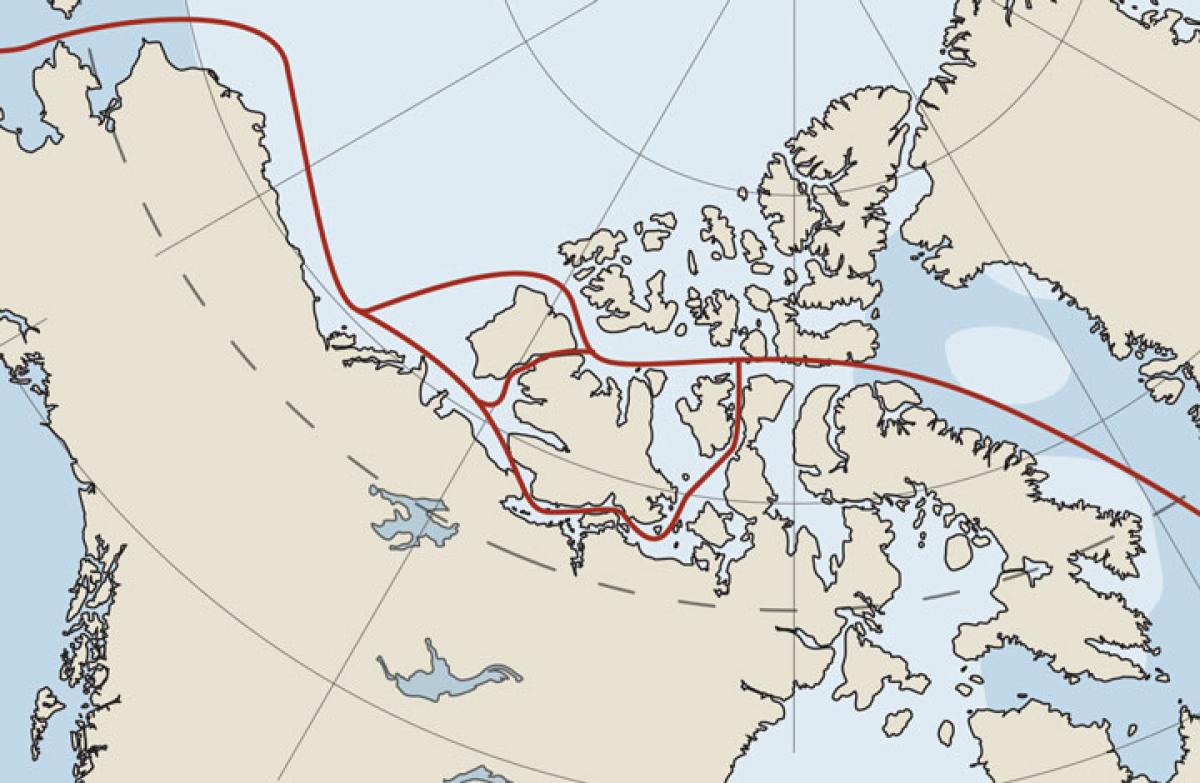The first serious attempt to find a way from Europe to the “Indies” began with John Cabot in 1497, when he landed at what is now St. Johns, Newfoundland. Britain initially supported these explorations to avoid conflicts with the more powerful navies of Spain and Portugal. While this threat was gone within a half-century, English-led explorations continued nearly 400 years until the end of the 19th century.
Geographically, there is a passage through the Canadian Archipelago. The problem was that parts could be blocked by ice year-round. At best, navigation is through a transcontinental maze of islands to find open, ice-free water.
It was not an Englishman who made the first successful passage. The great Norwegian explorer Roald Amundsen did it in 1903–06. But it was not until 1944 that anyone crossed it in one season. That trip was made by Captain Henry Larsen in the Royal Canadian Mounted Police schooner St. Roch.
Today, the Northwest Passage is still difficult. A few ships do go through, but it is not unusual to be stopped by ice at certain choke points. With the Arctic warming twice as fast as the rest of the world, passage during the summer months is becoming more frequent. The majority of the traffic is Canadian, mostly for research work, support of native villages, and fishing. In recent years, there also has been an increasing number of cruise ships.
Will the Northwest Passage eventually become a world trade route? Perhaps, but this will not happen for several years. There are too many infrastructural, environmental, and climate-related issues to solve first. Geographically, the route saves about 4,300 miles between Asia and Europe via the Panama Canal. Economically, there will be cost questions related to possible requirements for escort vessels (icebreakers, Coast Guard, etc.), use of Canadian ship pilots, ice-strengthened vessels, and length of navigation season. All add to the overhead costs of using this route. Finally, there are political difficulties about who has the right to use the Northwest Passage. Bottom line: It may not be worth it for most of the world’s commercial shipping operations.
There is a long-standing political problem about use of the Northwest Passage. The United States, the European Union, and some other maritime nations believe this is a “traditional sea route” as defined in the United Nations Law of the Sea Treaty. Therefore, it is freely open to all nations to use for “innocent passage”—that is, vessels can pass through these waters as long as they only transit. No other activities are permitted. Canada’s sovereignty remains intact, and it has policing rights to ensure transits are indeed innocent.
The Canadians do not agree that the Northwest Passage has international status. They assert it is in their internal waters within the “Canadian Arctic Archipelago.” Thus, international shipping is permitted only with specific permission of their government.
The United States has asserted innocent passage by sending at least one nuclear submarine through submerged. The USS Seadragon (SSN-584) did this in 1960, and most likely others have done it since; the passage is an excellent way to quietly move submarine assets between oceans. Canada officially protested, but in fact there were Canadian observers on board.
A more high-visibility innocent passage was the Coast Guard icebreaker USCGC Polar Sea (WAGB-11) in 1985. Again, Canadian observers were on board. And again, there was considerable government and public outcry about Canadian sovereignty being violated.
Why is the United States taking this stand if the Northwest Passage has marginal utility as an international trade route? The reason is consistency. In the 1980s, the Third U.N. Law of the Sea Treaty provided that a nation’s territorial seas would expand from 3 to 12 miles. It also created a 200-mile “Exclusive Economic Zone” extending from the shorelines of all coastal nations, which would retain certain powers within their EEZs to police activities within. But innocent passage is guaranteed without asking the coastal state for permission to pass.
If the principle of innocent passage had not been stipulated for traditional straits such as Gibraltar and Malacca then possibly they could have been closed off by the adjacent coastal states. Now they remain open to all maritime traffic as long as it is innocent. Thus, in the U.S. view, the Northwest Passage has the same status. If the United States were to make an exception there, then its assertion for other traditional passages would be greatly weakened. That’s the consistency issue.
It is doubtful that the Northwest Passage will become a major shipping route in the foreseeable future. The Northeast Passage across Russia, though slightly longer, is far more feasible and economically practical.
In the near term, it is doubtful that the United States and Canada will agree on the question of Northwest Passage sovereignty. We will continue to respectfully “agree to disagree.”




